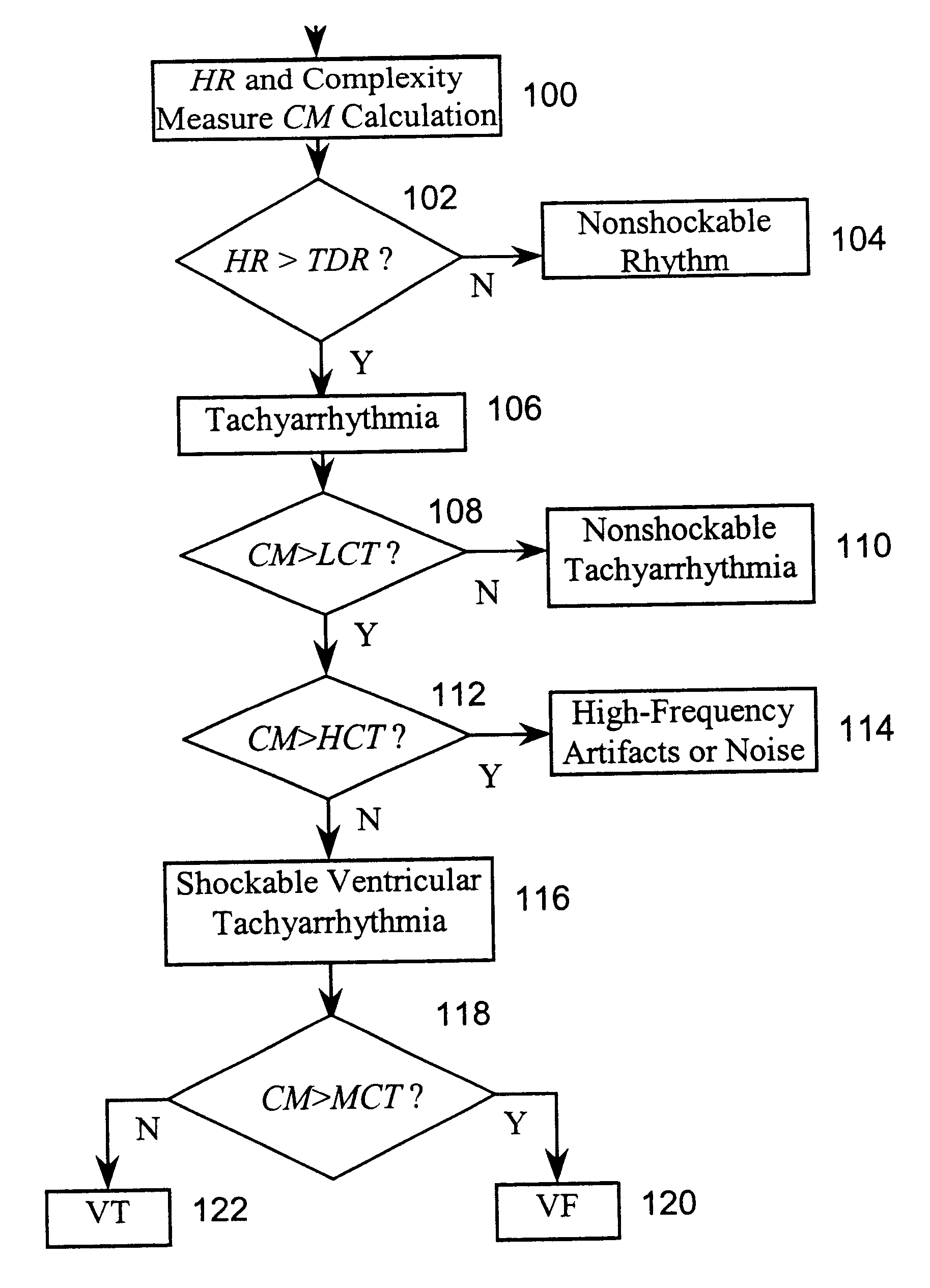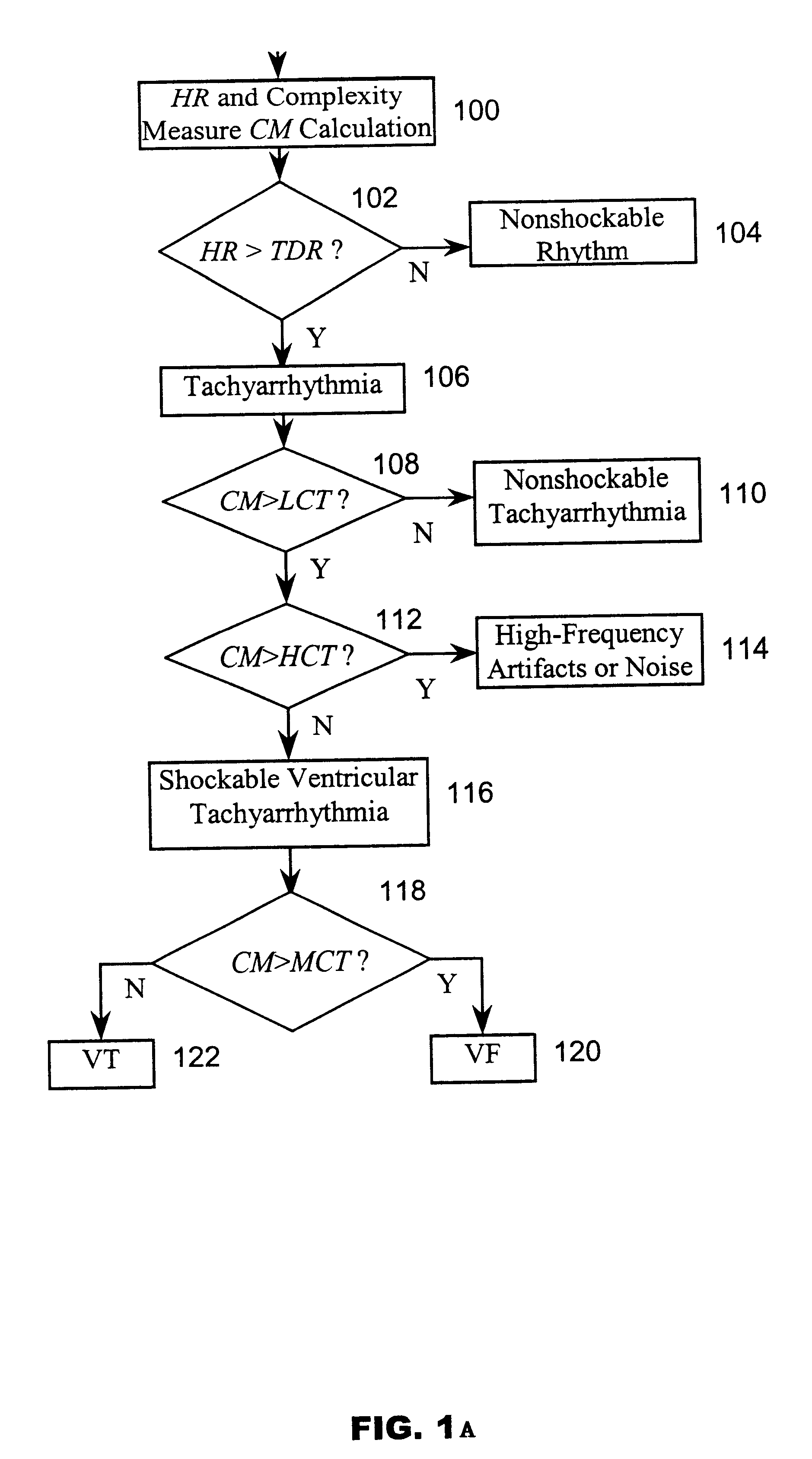System and method for complexity analysis-based cardiac tachyarrhythmia detection
a complexity analysis and cardiac tachyarrhythmia technology, applied in the field of system and method for complexity analysis-based cardiac tachyarrhythmia detection, can solve the problems of linear nature, computational complexity, or difficulty in real-time implementation, and all these manipulations have fundamental limitations, so as to avoid possible misidentification, clear and reliable indications
- Summary
- Abstract
- Description
- Claims
- Application Information
AI Technical Summary
Benefits of technology
Problems solved by technology
Method used
Image
Examples
example 2
From this sequence S, the number of different sub-sequences (as determined by the complex counter 64 in FIG. 3A and described in FIG. 4) contained in S are calculated by complexity analysis as follows.
First, let P and V denote, respectively, two mutually exclusive sub-sequences of the sequence S, and PV be the concatenation of P and V, while string PVd is derived from PV after its last character ("0" or "1") is deleted (d defines the operation in which the last character of PV is deleted). Moreover, Let symbol ".diamond-solid." the end of each different sub-sequence.
(1) First character (i.e., in this case 0) is always a new one. Therefore the first sub-sequence is .fwdarw.0.diamond-solid..
(2) The second character of S is 0 and this is identical to the first sub-sequence. In this case P=0, the new subsequence V=0; PV=00 and PVd=0. Therefore, PVd contains V, so V is not a new sub-sequence .fwdarw.0.diamond-solid.0.
(3) The third character of S is 1. The previous sub-sequence (before "....
PUM
 Login to View More
Login to View More Abstract
Description
Claims
Application Information
 Login to View More
Login to View More - R&D
- Intellectual Property
- Life Sciences
- Materials
- Tech Scout
- Unparalleled Data Quality
- Higher Quality Content
- 60% Fewer Hallucinations
Browse by: Latest US Patents, China's latest patents, Technical Efficacy Thesaurus, Application Domain, Technology Topic, Popular Technical Reports.
© 2025 PatSnap. All rights reserved.Legal|Privacy policy|Modern Slavery Act Transparency Statement|Sitemap|About US| Contact US: help@patsnap.com



